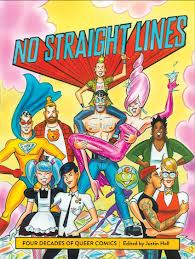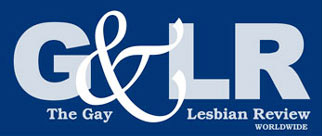 No Straight Lines: Four Decades of Queer Comics
No Straight Lines: Four Decades of Queer Comics
Edited by Justin Hall
Fantagraphics. 304 pages, $35.
NO STRAIGHT LINES is not a book about Tom of Finland. While the erotic art of Finnish illustrator Touko Laaksonen makes a brief appearance in this book, Justin Hall is primarily concerned with the cultural underground that GLBT comics have documented—and the political alternatives that they have imagined—from the late 1960s to the present. Gathering selections of work by more than eighty artists from North America and Europe, No Straight Lines is a landmark publication for comics readers and a valuable introduction for those new to the genre.
Queer comics emerged along with the gay and lesbian liberation movements of the 1960s. Drawing from the underground press of the antiwar and counterculture movements, alternative newspapers and their cartoon artists carved out a key space for the expression of gay and lesbian identities. GLBT comics, in turn, built off the underground “comix” movements of the late 1960s and early ’70s represented by the work of artists such as R. Crumb and Harvey Pekar, but they challenged the heterosexism and male privilege of the straight comix world. From the single-panel or short-strip cartoons published in The Advocate and the Bay Area Reporter to Come Out Comix (1973), and on to Mary Wings’ pioneering lesbian comic book and the San Francisco-based Wimmen’s Comix collective, queer comics filled the pages of the gay press, making use of visual narrative to document gay people’s lives and challenge the dominant storylines of American public life.
All of that is represented here, and more. By the 1980s, some artists were experimenting with the long-form graphic novel format best known in Art Spiegelmann’s Maus (1991). Others were inspired by punk and “zine” cultures to connect radical innovations in print culture to political organizing in gay communities. AIDS dominates the middle section of No Straight Lines, both as a subject matter for personal reflection and expression and as the political crisis that socially oriented comics addressed. A brief excerpt from David Wojnarowicz’s 7 Miles a Second conveys the links between comics and the 1980s East Village art scene; segments from Alison Bechdel’s Dykes to Watch Out For recall the 1983 birth of the now iconic strip.
The relationship between GLBT comics and alternative politics today has become more complex, wrapped up more generally in the politics of assimilation. On the one hand, gay and lesbian comics have gone mainstream, exemplified by the critical and commercial success of Alison Bechdel’s memoir Fun Home (2006). On the other hand, as Hall notes, “it would be impossible to make a living with Dykes to Watch Out For now, with the disappearance of so many of the gay newspapers that supported the weekly strip.” If the alternative press no longer plays the role it once did, new media and the globalization of comics cultures offer new venues for expression, which No Straight Lines documents with a fascinating selection from transgender artists.
No Straight Lines provides an excellent overview of this genre, and, although its size and format seem designed for occasional sampling, it’s hard to resist a cover-to-cover reading. These days, when even Archie has a gay best friend, is there a place for “queer comics” as such? Explains Hall: “It falls to queer comics to dissect queer identities and examine in more profound ways the queer experience.”
________________________________________________________
Christopher Capozzola is an associate professor of history at the Massachusetts Institute of Technology.






